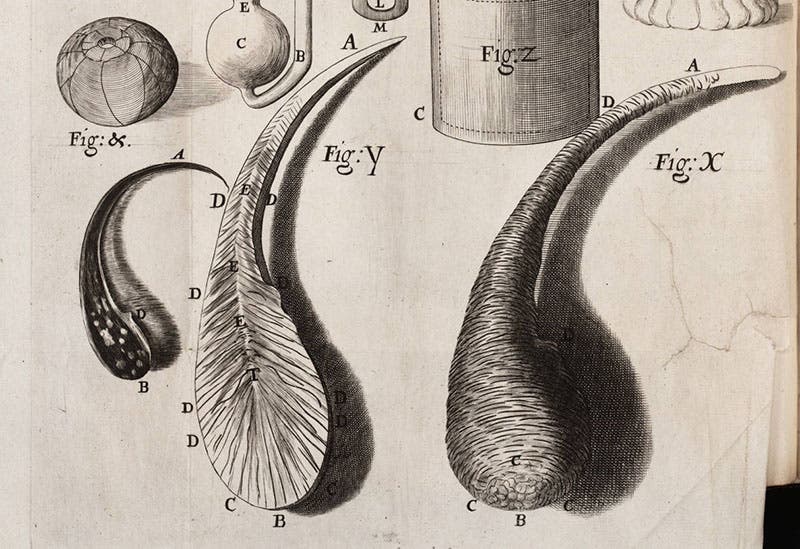Scientist of the Day - Geminiano Montanari
Geminiano Montanari, an Italian physicist and astronomer, was born June 1, 1633. Montanari is best known for discovering that Algol, a bright star in the constellation Perseus, is a variable star, so that its brightness falls off for about ten hours every three days or so. This was only the third-known variable star, and the first with a short period. We now know that Algol is an eclipsing binary star, with a close companion that crosses the face of the main star every three days and briefly dims its light. Algol means the "head of the ghoul" in Arabic, and Perseus is sometimes depicted holding the head of a ghoul in his hand, but more typically, he holds the severed head of Medusa, as we see in a detail of a plate in the star atlas of Johann Bode of 1801 (first image); Algol is on Medusa’s forehead, and is labelled “Algol variabilis”, showing that Bode had profited from Montanari’s discovery. In the Renaissance, Algol was one of the 15 most important astrological stars, and it was considered to have dire effects if you could summon its influence. However, to do so, you needed to have on hand its associated gemstone, which was a diamond, and its sympathetic herb, which was hellebore, which must have restricted its usefulness somewhat. On this occasion, however, we remember Montanari as the first natural philosopher to write a treatise that attempted to analyze the curious glass forms known as "Prince Rupert’s Drops." These are small tadpole-shaped beads that are formed by dropping molten glass blobs into a bucket of water. They look like this. But it is not their pretty shape that attracted the attention of the Royal Society of London in the 1660s. It was rather a most amazing property that these drops have; they will resist the blow of a hammer, but if you break off even the tip of the long spindly tail, they will instantly explode into glass-dust. To appreciate the suddenness of this transformation, you really need to see a video, so take your pick; this first video is short and very matter of fact, with little glitz; this second video is schmaltzier, and quite a bit too long, but it does have better images, including several showing the explosion of a Prince Rupert drop taken at 130,000 frames per second.
Knowledge of these glass wonders was brought to England by Prince Rupert of Bavaria, a close relative of King Charles II, who was restored to the throne in 1660, but it is unlikely that Rupert discovered the drops and their explosive powers. However, he did introduce them to the Royal Society (of which Rupert was a charter member), and Robert Hooke printed an engraving of two Prince Rupert drops in his Micrographia of 1665 (the drops are at the bottom of the plate, figs. X and Y; we show a detail of that plate just above, second image). Montanari then tried to figure out their strange behavior in a treatise of 1671, Speculazione fisiche, but of course he was unable to do so, since it would be a few centuries before physicists could produce polarized images like this one, which show how the glass on the surface of the drop is in a state of high compression, while the interior glass is in a state of high tension. This third 2-minute video I saved for last, because it tells you essentially everything I have told you, and more, with video, rendering my text superfluous. We have Montanari's treatise on Rupert's drops, as well as his pamphlet on Algol, and eleven other original Montanari works in our History of Science Collection. We do not have the English translation of Antonio Neri’s The Art of Glass (1662), containing the very first image of a Prince Rupert drop, which you can see on Wikipedia (with however an incorrect attribution). This would be a nice work to acquire. Dr. William B. Ashworth, Jr., Consultant for the History of Science, Linda Hall Library and Associate Professor emeritus, Department of History, University of Missouri-Kansas City. Comments or corrections are welcome; please direct to ashworthw@umkc.edu.







